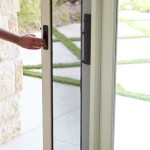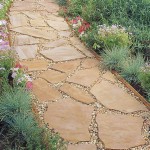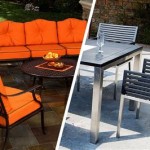How to Make Your Own Patio Table Top
Creating a custom patio table top allows for personalization and cost savings compared to purchasing a pre-made one. This article outlines a comprehensive guide to crafting a durable and aesthetically pleasing patio table top, covering material selection, construction techniques, and finishing options.
Selecting the Right Material
The choice of material is paramount, as it directly impacts the table top's longevity, appearance, and maintenance requirements. Several options exist, each with distinct advantages and disadvantages.
Wood: Wood offers a classic and warm aesthetic. Popular choices include cedar, redwood, and teak, all known for their natural resistance to rot and insects. Cedar is a more affordable option, while teak is prized for its exceptional durability. However, even with weather-resistant species, wood requires regular sealing or staining to prevent moisture damage and fading from UV exposure. Consider the grain pattern and color variations when selecting wood, as these will contribute to the final appearance. Pressure-treated lumber is another option, offering enhanced resistance to decay and insects. However, it's crucial to ensure the lumber is properly dried before use to prevent warping.
Concrete: Concrete provides a modern and industrial look and is exceptionally durable. It can be cast in various shapes and sizes and can be stained or textured for added visual appeal. However, concrete is heavy and requires a sturdy base. The process also involves mixing and pouring concrete, which can be labor-intensive. Reinforcement with rebar or wire mesh is essential to prevent cracking. Sealing is necessary to protect the concrete from staining and water damage.
Tile: Incorporating tile into a patio table top allows for diverse design possibilities. Tiles can be ceramic, porcelain, or stone, offering a range of colors, patterns, and textures. A solid substrate, such as plywood or cement board, is required for tile installation. Grout is used to fill the spaces between the tiles and must be sealed to prevent water penetration. Consider the freeze-thaw cycle in your area when selecting tiles, as some types are more susceptible to cracking in cold weather. Non-slip tiles are recommended for increased safety.
Recycled Materials: For those seeking an eco-friendly option, recycled materials like reclaimed wood or plastic lumber can be utilized. Reclaimed wood offers a unique character and reduces the demand for new timber. Plastic lumber is highly resistant to moisture and insects and requires minimal maintenance. When using recycled materials, ensure they are clean and free from any harmful substances.
Construction Techniques
Once the material is selected, the construction process involves several steps, each requiring precision and attention to detail. The following sections elaborate on common construction methods.
Wood Table Top Construction: For a wooden table top, begin by cutting the lumber to the desired dimensions. If using multiple boards, join them together using wood glue and clamps. Ensure the boards are aligned properly to create a smooth and even surface. Consider using biscuits or dowels for added strength. Once the glue has dried, sand the surface smooth, starting with a coarse grit sandpaper and gradually progressing to a finer grit. Pay close attention to the edges, rounding them slightly for comfort and safety. Apply a wood sealer or stain to protect the wood from the elements.
Concrete Table Top Construction: Building a concrete table top requires creating a mold. Plywood or melamine boards can be used for this purpose. Assemble the mold securely, ensuring it is watertight to prevent leakage. Mix the concrete according to the manufacturer's instructions. Pour the concrete into the mold, filling it evenly. Vibrate the mold to remove any air bubbles. Insert rebar or wire mesh for reinforcement. Allow the concrete to cure for the recommended time, typically several days. Once cured, remove the table top from the mold and sand the edges smooth. Apply a concrete sealer to protect the surface.
Tiled Table Top Construction: For a tiled table top, start by constructing a solid substrate from plywood or cement board. Cut the substrate to the desired dimensions and attach it securely to the table base. Plan the tile layout carefully to ensure a balanced and aesthetically pleasing design. Apply a thin-set mortar to the substrate using a notched trowel. Place the tiles onto the mortar, pressing them firmly into place. Use tile spacers to maintain consistent spacing between the tiles. Allow the mortar to dry completely, typically overnight. Apply grout to fill the spaces between the tiles. Remove any excess grout with a damp sponge. After the grout has dried, apply a grout sealer to protect it from staining.
Attaching the Table Top to the Base: Securely attaching the table top to the base is crucial for stability. For wooden table tops, screws or bolts can be used. Drill pilot holes to prevent the wood from splitting. For concrete or tiled table tops, construction adhesive or epoxy can be used. Ensure the adhesive is compatible with both the table top and the base. Consider using metal brackets for added support.
Finishing and Sealing
The finishing touches are crucial for enhancing the table top’s appearance and protecting it from the elements. This step typically involves sanding, staining or painting, and applying a protective sealant.
Sanding: Regardless of the chosen material, sanding is essential for creating a smooth and even surface. Start with a coarse grit sandpaper to remove any imperfections, then gradually progress to finer grits to achieve a smooth finish. For wood, sanding with the grain is recommended. For concrete, a diamond-grit sanding pad can be used. Ensure all dust is removed before proceeding to the next step.
Staining or Painting: Staining or painting allows for customization of the table top's color and appearance. For wood, a variety of stains and paints are available, offering different levels of opacity and color intensity. For concrete, concrete stains and dyes can be used to achieve a variety of effects. Ensure the surface is clean and dry before applying any stain or paint. Apply multiple thin coats for a more even and durable finish. Allow each coat to dry completely before applying the next.
Sealing: Sealing is crucial for protecting the table top from moisture, UV damage, and staining. For wood, a variety of sealers are available, including polyurethane, varnish, and oil-based sealers. For concrete, a concrete sealer is essential to prevent water penetration and staining. For tiled surfaces, a grout sealer is necessary to protect the grout from moisture and dirt. Apply the sealer according to the manufacturer's instructions. Multiple coats may be required for optimal protection. Consider applying a UV-resistant sealer to prevent fading from sun exposure.
By carefully considering the material selection, construction techniques, and finishing options, a durable and aesthetically pleasing patio table top can be crafted, providing years of enjoyment. Regular maintenance, such as cleaning and reapplying sealant, will extend the life of the table top and preserve its appearance. Consider the table's intended use and the surrounding environment when making design choices, ensuring the finished product complements the outdoor space.

Diy Outdoor Table Free Plans Cherished Bliss

Diy Round Outdoor Dining Table With Accents Jaime Costiglio

Outdoor Table With X Leg And Herringbone Top Free Plans

How To Build An Outdoor Farmhouse Table For Under 100 Woodworking Diy Project

Updating My Outdoor Coffee Table 100 Things 2 Do

Small Diy Outdoortable For Porch Or Patio

Make A Easy Diy Deck Patio Dining Table Metal Hairpin Legs Shou Sugi Ban Type Polyurethane Finish

Bryan S Site Diy Cedar Patio Table Plans

Split Herringbone Patio Tabletop Deeply Southern Home

51 Diy Outdoor Table Top Ideas Perfect For Your Patio Or Deck Bird








